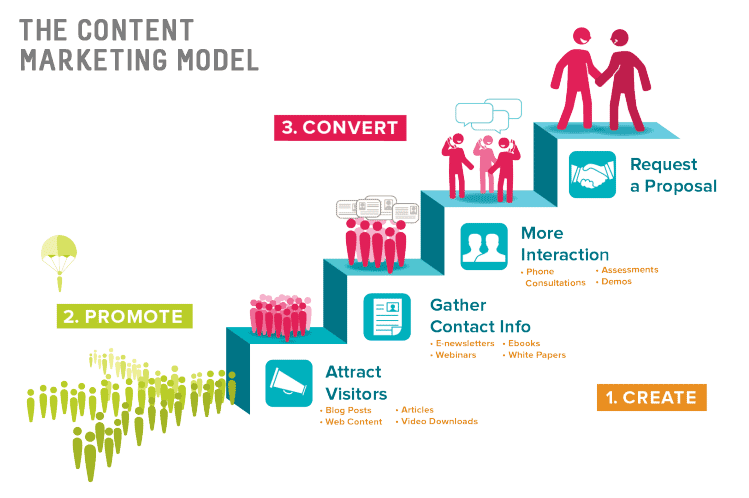Editorial Calenders Impart Efficiency & Organization for Content Marketing
//As a business, how you create, structure and define content will define your success in today’s digital eco system.
Your business is a mini media company publishing on an almost unlimited number of platforms.
Leads and revenue begin with engagement on a social platform and content is the fundamental driver for visibility.
Thinking about content strategically requires your business to identify who your targeting (persona or customer) and how, when and where you want to reach them: Blog, LinkedIn, Facebook, Tumblr, Slideshare, Twitter, YouTube: the list is almost endless.
An Editorial Calendar helps you to identify key content marketing objectives and tactics. You can start crude: napkin on the dinner table, or notes on your iPhone or in a more systematic way using a Spreadsheet or a Dedicated Document.
Every stellar content marketing program begins with a carefully planned and well executed editorial calendar. It’s the best way for integrating content into a cohesive story for your targeted market.
It’s not a document that needs to be adhered to verbatim; just having one will make you more consistent, imparts structure and discipline in your content marketing initiatives and it’s a living breathing document that can and should be updated on a regular basis.
Editorial Calendar Components
- Alignment with your buying cycle phases and your audience.
- SEO Elements: keywords that dovetail with other content and embedded in Topics and Titles
- Who’s on First: Department or Individual content “owners” - when content will be produced, on what platforms and social channels.
- Timeline and Schedule with built in Rise and Repeat Cycles
- Categories: highlighting: Newsletters, Event Attendance, PR Updates, Key Marketing Initiatives
- Distribution and Syndication (Platforms, Apps and Process)
- Industry News that’s topical
- Images, Videos or Infographics Integration sourced via: Blog, Web Site, Pinterest, etc.
- Should be coordinated with social media marketing initiatives: links shared, docs, White Papers, blogs, emails. etc.
You don’t necessarily need all of these elements we just listed. What gets in the way for most brands and businesses is the “OMG” factor: “you mean we need all of these geeky marketing elements.
In a word: No. Start small and build up and out.
Here’s a basic Editorial Calendar in a Color Coded Spreadsheet (click image to enlarge)
Here is a Stellar Example of a Very Sophisticated Editorial Calendar: used with permission via Pam Dyer and it can be Downloaded Via our Drobox Folder
An Editorial Calendar is only as good as the source material your curating and sharing. It’s somewhat of a horizontal marketing tool that’s now in vogue, driven as we said at the outset of this post, by the glut of content streaming in via all devices. But, it will any business add more structure and discipline to your content marketing processes, which is always a good thing.
As you become familiar with an Editorial Calendar come back to it once a quarter and drop in another element or tow to improve your overall content marketing strategy and tactics.
Seven Key Content Marketing Metrics
- Stellar curated content still drives engagement: an editorial calendar is just a horizontal tool.
- Mobile usage is driving 30-50% of content “consumption” (be mobile savvy) but “brand stories” may drive significantly more engagement: mix and match the size of your content (long or short form).
- Content syndication is increasingly more important in today’s “technology drenched’ world: use rinse and repeat cycles to reach today’s distracted consumer and professional.
- Personalty still drives content engagement for B2B and B2C brands and it’s becoming increasingly more important to use imagery that gets attention in the marketplace. Note: LinkedIn’s move to an image centric feed.
- Content Measurement is Critical: have a finite grasp of these ROI drivers: Unique Visitors, Page Views, Return Visits, Time on Site, Bounce Rate, Engagement/Virality (ReTweets, Shares, Likes, Comments), Revenue or Lead Generation.
- Mix and match “snackable” short form content (images, video, infographics) with “evergreen” high value content to drive brand engagement, incremental traffic and revenue.
- Build in cross platform marketing on all top tier platforms: Tumblr, LinkedIn, Twitter, Pinterest, Facebook using plugin to automatically “push” content to other platforms or pure play content syndication cloud based services.
Smartphone Takeaways
Your business should be spending as much time marketing your content as creating it.
Every market is crowded and over 2 gigabytes of content are uploaded to the web every second. That’s a lot of content.
Think of an editorial calendar as a tool that will help your company take a more disciplined approach to creating and syndicating content.
For a deeper dive into content marketing platforms and processes this blog post will give you a good 30K foot perspective on process, apps, tools and twenty five top tier marketing platforms.





Leave a Reply
Any comments containing links will be removed!
Want to join the discussion?Feel free to contribute!